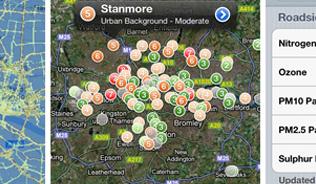Listen to more episodes of 'From the Archive' on the series hub.
Systems pervade the natural, societal and technological worlds – from bee swarms to traffic jams; natural to industrial ecosystems; and underpinning pervasive issues, from climate change to obesity.
Addressing environmental issues requires a move from linear and siloed thinking to ways of working that address the dynamic, interdependent complexity of real-world contexts. This means working at and across different scales e.g. from the Giardia parasite in a beaver to a whole forest ecosystem. We must recognise the nature of change as systems flip (potentially unpredictably) from one state to another and take into account the close coupling between natural and human systems as well as sub-systems, such as in forestry.
Systems thinking can help us to do this and, when done well, it encompasses the whole picture, highlights the broader context, considers interactions among multiple levels, recognises the dynamic shifts that occur over time, and encourages collaboration. Crucially, it can develop a deep appreciation of the structure and processes within a system that can help identify key points and levels where interventions might be made under a range of plausible scenarios.
The Supplementary Evidence Report to the 25 Year Environment Plan1 said this:
“Systems models and futures analysis also provide the material to build the capacity and confidence of decision-makers and stakeholders to shape policies and interventions as 'hypotheses' that can be tested as part of adaptive management to better target investment where it will have most impact over the long-term.”
This was written with the firm belief that the value of taking a systems approach resides both in the process of constructing systems thinking and the existence and application of artefacts (such as systems maps) as a product. Here, systems thinking is best approached as a process of collective inquiry, helping to shape thinking, challenge assumptions and world-views and create insights. This involves deep and wide engagement and collaborative exploration of the issues, boundaries, drivers of change, structures and interactions within the system and sub-systems. Participants would identify questions to research and work on together to explore these questions; reflecting on and revising their understanding of the system as they progress. The various perspectives and insights generated must be synthesised and integrated into strategy and policy design; developing and testing ideas for interventions at appropriate levels and locations within the system that work for the system as a whole, breaking down and not reinforcing silos.
Taking the collective learning approach as the basis of systems thinking, there needs to be a strong focus on facilitating and enabling participants in the process of systems thinking and the creation of systems products to have traction and impact with stakeholders in government, business and civil society. This requires effective knowledge exchange and brokering to understand mutual needs, constraints and capabilities and to forge and maintain constructive dialogue.
As is often the case, no single approach or method can be sufficient and so it should be recognised that systems thinking methods, such as systems mapping, can make significant contributions alongside other approaches to tackling complexity and uncertainty, such as scenario planning – and often the two go hand-in-hand – for example in the UK National Ecosystem Assessment.
Having set out such broad purposes and parameters, it is important to adopt one or more organising frameworks, and in the context of systems thinking, there is a wide range of options available, many of which have track-records in tackling environmental issues. Key frameworks would include:
- The European Environment Agency’s Drivers, Pressures, State, Impacts and Responses (DPSIR) model2 and within that, the source-pathways-receptor framework. Moreover, the 25 YEP indicator framework was initially developed using a Pressures, Assets and Benefits framework (although this has since been revised).
- Socio-ecological systems (SES) and socio-technical systems (STS)3,4 with their foci on the flows of ecosystem goods and services across production and consumption systems such as energy, food and mobility. In particular, this focus is core to the development of the Integrated Assessment within the European Environment Agency’s 2020 State of Environment Report (SOER).
- The seventeen UN Sustainable Development Goals (SDGs)5 that help describe ‘what good looks like’ but also make clear the numerous intimate and ‘indivisible’ interlinkages between the goals; their synergies and trade-offs and cross-cutting issues.
Drilling down beneath the organising frameworks, there is a wealth of methods, techniques and procedures for developing systems thinking, including mathematical modelling such as agent-based models; diagrammatic methods such as causal-loop diagrams; and narrative techniques including scenario storylines. The fundamental and essential point here is that the objectives of the work must determine the methods – and not vice versa! As such, early work is needed to clarify the objectives and then to identify the most suitable methods required to meet those specific objectives.
Whichever approaches and methods are used, it is important to recognise certain features of systems thinking in relation to the environment:
- that environmental systems are composed of nested and coupled sub-systems; exhibiting complex behaviour over multiple temporal and spatial scales;
- that environmental and human systems are closely coupled; requiring a socio-ecological approach;
- that there are multiple goals and drivers of change in play at any one time and scale;
- that many natural capital assets can and do perform multiple functions;
- that diverse expertise, perspectives and forms of knowledge from multiple disciplines and sectors are necessary; ‘getting the whole system in the room’; and
- that knowledge and capability gaps will emerge requiring planning for research, experimentation, innovation and learning.
Overall, there are multiple benefits of systems thinking but these are not necessarily straightforward to achieve. Realising the benefits of systems thinking means building on innovation through collaboration, validating this through demonstration of relevance and benefit and embedding into practice through collective learning. The Institution of Environmental Sciences draws on the depth and breadth of the expertise of its members to champion the systems-based approaches required to tackle environment and sustainability challenges.
1. HM Government (2018)., A Green Future: Our 25 Year Plan to Improve the Environment, Annex 1: Supplementary evidence report., https://assets.publishing.service.gov.uk/government/uploads/system/uploads/attachment_data/file/673492/25-year-environment-plan-annex1.pdf
2. European Environment Agency (1997)., Air pollution in Europe 1997., https://www.eea.europa.eu/publications/92-9167-059-6-sum
3. Glaser, M. , Krause, G. , Ratter, B. M. and Welp, M. (2008): Human/Nature Interaction in the Anthropocene: Potential of Social-Ecological Systems Analysis , Gaia-Ecological Perspectives for Science and Society, 17 (1), pp. 77-80 .
4. Geels, F. W., 2002b,, 'Technological transitions as evolutionary reconfiguration processes: a multi-level perspective and a case-study',, Research Policy 31(8), pp. 1257-1274.
5. https://www.un.org/sustainabledevelopment/sustainable-development-goals/





